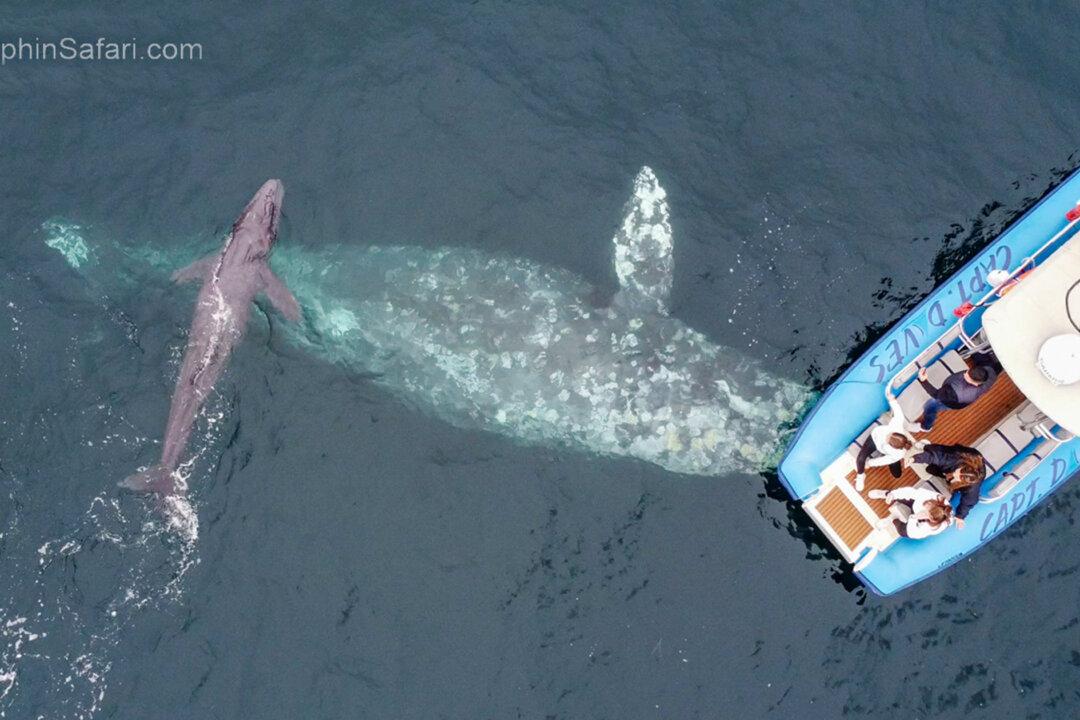Ecstatic whale watchers off the Southern California coast were treated to a once-in-a-lifetime sight when a migrating gray whale gave birth to her calf just meters away from their boat. A cellphone and drone captured the birth and the first moments of the calf.
On Jan. 2, Capt. Dave’s Dana Point Dolphin & Whale Watching Safari was hosting a whale-watching trip off Dana Point, south of Los Angeles when a 35-foot female gray whale and her newborn calf, around 14 feet long, emerged.





